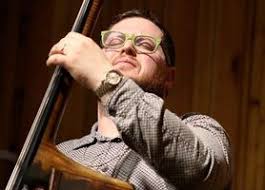Comfortable in New Orleans: Cyrus Nabipoor leads quintet in 'Live at the Marigny Opera House'

Cyrus Nabipoor is now based in Portland A young trumpeter based in Portland, Oregon, with a strong sentimental link to New Orleans (he's a magna cum laude graduate of Loyola University), Cyrus Nabipoor took a quintet into the former church in 2019 to play his compositions for a concert audience. "Live at the Marigny Opera House" (Nabipoormusic@gmail.com) documents that comfortable hometown visit to a cultural venue that was a Catholic church from 1853 until the diocese closed it in 1997. In its repurposed function, it has been called the Marigny Opera House since 2011 For 144 years, the Marigny was a church. The resonance in the recording is slightly churchy, and the setting seems copacetic for the music. The venue's original use is alluded to in "There Is a Light That Never Goes Out," one of two tunes borrowed for a concert otherwise featuring Nabipoor compositions. The comfort zone is settled into, but there's no resting in the hackneyed for these...







